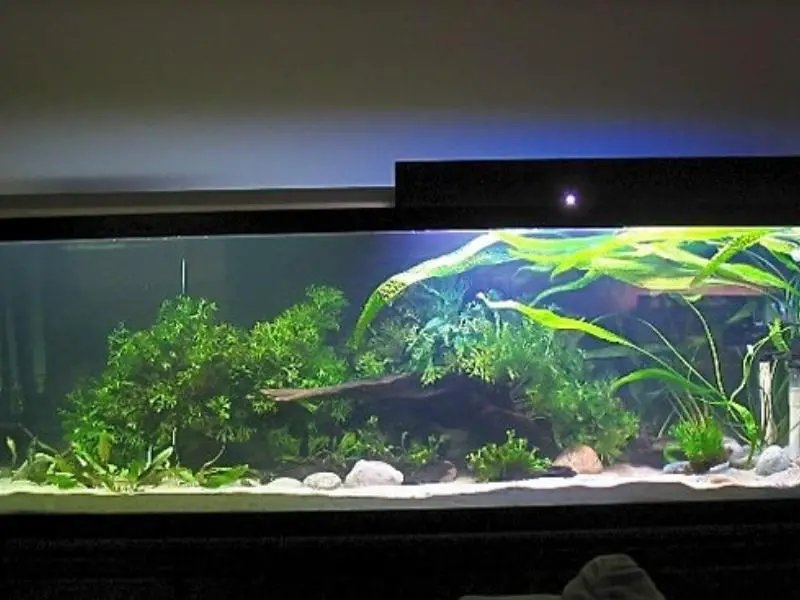
Whether you’re a newcomer or have some fish-keeping experience under your belt, understanding the right tank size, water conditions, and décor makes a huge difference in your loach’s happiness. Think of it as creating a mini ecosystem where each element plays a vital role. It’s essential to get this right to keep your loaches swimming happily and healthily.
Choosing the Right Tank Size for Your Loach
When it comes to loach fish, size truly matters. These fish can range from small to quite sizable depending on the species, so starting with the right tank is crucial. For smaller loaches, like the dwarf loach, a 20-gallon tank could suffice. However, for larger ones, like the clown loach, you should consider a tank that’s at least 75 gallons. Why? Because loaches are social creatures that enjoy swimming around, and having enough space allows them to express their natural behaviors.
If you’re planning on keeping multiple loaches, remember that they do better in schools. You’ll want to have a bigger tank to accommodate a group of at least 3 to 6 loaches. Think of it like a community; the more friends they have, the happier they are! A cramped tank is like trying to live in a tiny apartment with lots of roommates — it just doesn’t work well.
Understanding Water Conditions for Loaches
Now that you’ve decided on the size of your tank, let’s talk about water conditions. Loaches are quite adaptable, but they thrive best in specific parameters. Aim for a temperature between 75°F and 80°F. This range mimics their natural habitats, making them feel right at home. You might be wondering how to keep the temperature stable, especially in changing seasons. A reliable aquarium heater can help maintain the warmth consistently.
Next up is the pH level, which should ideally be between 6.0 to 7.5. Regularly testing the water with a quality pH tester will help you keep track. If your water is too acidic or alkaline, it can stress your loaches and lead to health issues. Using a dechlorinator is another good practice, as chlorine in tap water can be harmful.
Filtration and Water Quality
Keeping the tank clean is just as important as having the right size and temperature. Loaches are known for being bottom feeders, which means they can stir up waste in the substrate and make a mess. That’s where a good filtration system comes into play. A filter with a medium flow rate is ideal; too strong, and it might stress out your fish.
Also, implementing a regular cleaning schedule is a great way to ensure water quality. Change about 10-15% of the water weekly to keep toxins at bay. Here’s a handy tip: Use a siphon gravel cleaner during water changes to remove uneaten food or waste lurking in the substrate. Your loaches will thank you for a clean home!
Decorating Your Loach Tank
Creating an ideal environment for your loaches also means thinking about their décor. These fish love to explore and hide, so providing them with plenty of hiding spots is essential. Start with smooth rocks, driftwood, and caves, as they give your loaches a cozy and secure place to retreat. Avoid sharp objects, as they could injure delicate fins.
Plants are another fantastic addition. Live plants, like Java fern or anubias, not only beautify the tank but also improve water quality. They provide cover and naturally mimic their environment. Just remember to keep some open swimming spaces, too! Think of it as a balance between a cozy living room and a wide-open backyard.
Choosing Tank Mates for Your Loach
If you’re interested in creating a community tank, you’ll want to choose compatible tank mates. Loaches are generally peaceful, but they can be territorial with each other, especially in smaller tanks. It’s best to keep them with other peaceful species like tetras or rasboras. Avoid aggressive fish, as they can stress your loaches out.
When introducing new tank mates, make sure to do it gradually. Start by letting them acclimate to the tank’s environment to reduce stress. You might even want to rearrange the décor a little before adding newcomers, so the current inhabitants don’t feel their territory is being invaded. Think of it like welcoming a new friend into your circle — a little preparation goes a long way!
The Importance of Regular Monitoring
Keeping an eye on your loach’s health and your tank conditions is crucial. This means checking water parameters with a test kit regularly and observing your fish for any signs of distress. If you notice weird behavior, like staying hidden for too long or not eating, it might indicate a problem.
Being proactive can save you a lot of headaches down the line. If you’re facing issues like cloudy water or algae blooms, addressing them promptly can keep your tank healthy. Remember, a happy tank leads to happy fish, which ultimately makes your aquarium experience more enjoyable.
Wrapping It Up: The Ideal Loach Tank
Creating the ideal tank setup for your loaches is all about attention to detail. By choosing the right size tank, maintaining optimal water conditions, and furnishing the environment with suitable décor, you’re setting up a thriving habitat for your playful fish. Remember, loaches thrive in a well-maintained environment, so regular monitoring and good care are key.
As you embark on this fish-keeping journey, think of yourself as a caretaker providing a happy home for your loaches. It’s rewarding to see them flourish, swim, and explore their cozy, well-set-up space. With these tips in mind, you’re well on your way to creating an aquarium that’s not just a tank, but a vibrant underwater community. Happy fish-keeping!

